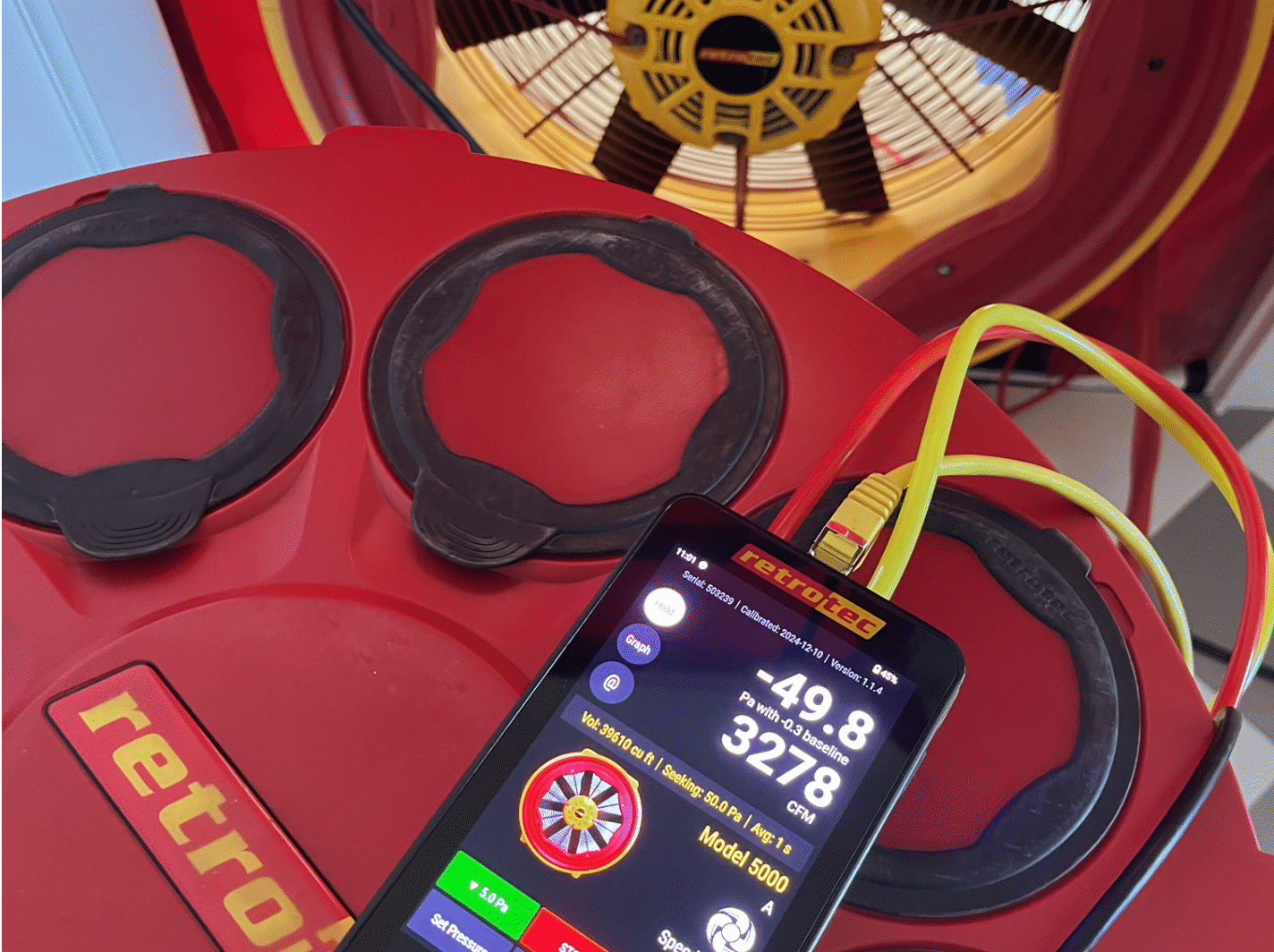Energy Code
Compliance.
Blower Door Testing NW provides independent, third-party blower door and duct leakage testing for new and existing homes across Western Washington. We serve Olympia to Bellingham—including Tacoma, Seattle, Bellevue, Kirkland, Everett, and surrounding areas in Pierce, King, Snohomish, Thurston, and Whatcom counties.

Comprehensive Services
We provide independent, third-party testing for new and existing homes across Western Washington including Pierce, King, Snohomish, Thurston, and Whatcom Counties.
Blower Door Testing
We perform blower door (aka air leakage) tests for single and multi family buildings. We have BPI certified technicians who will not only provide the test results and post the required certificate but also document the findings in the event that the test does not pass. This saves you time and money, making it easier to identify and remedy areas which are causing the failure.
- Certified Results
- Fast Turnaround
Duct Leakage Testing
We offer high-quality inspections for ductwork for homes with forced air or air conditioning. For duct tests, our technicians seal off and depressurize the ventilation system. Then with specialized equipment, they determine how much air pressure is escaping. These duct leakage tests ensure that your system is properly sealed and energy efficient.
- Certified Results
- Fast Turnaround
Pre-Consultation
Don't miss your closing date due to a failed blower door test. We offer pre-test consultation to help you address and identify the areas that can lead to test failure. Correcting these items before sheet rock can help to avoid costly repairs once the house is in the finished stage and ready for final inspection.
- Avoid costly mistakes
- Catch issues early
Why Choose Blower Door Testing NW?
Independent, third-party blower door and duct leakage testing for Washington State Energy Code compliance (2021 WSEC R402.4.1.3).
Modern Equipment
Best and most updated testing equipment.
Fast Response
48hr scheduling to keep your project moving.
Comprehensive Reports
Complete test certificates and documentation.
Frequently Asked Questions
What is a Blower Door Test?
What is a Duct Leakage Test?
How much does a test cost?
Is testing required?
What is Washington R402.4.1.3?
Ready to Schedule Your Test?
Pricing varies by square footage and location. We offer wholesale and volume pricing. Contact us today for a quote.



